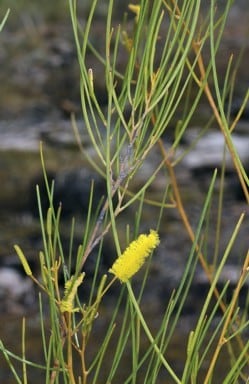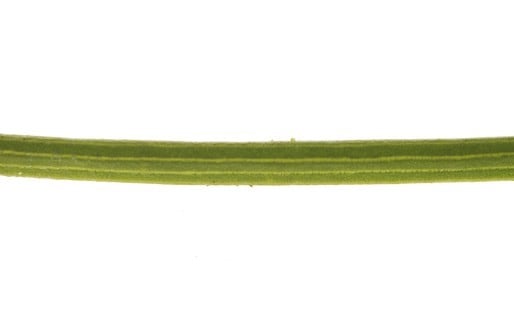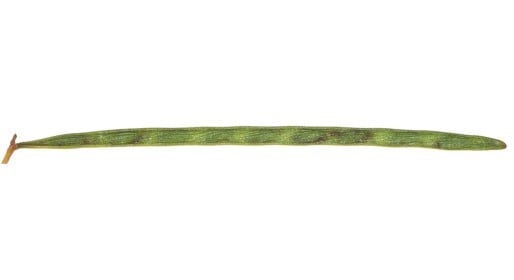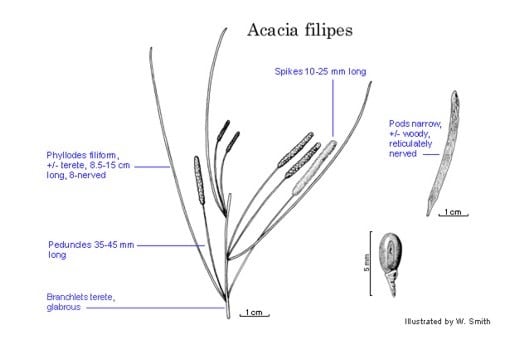Acacia filipes Pedley
WATTLE
Acacias of Australia
Family
Fabaceae
Distribution
A rare species confined to the vicinity of Deaf Adder Gorge, Kakadu Natl Park, N.T.
Description
Shrub to c. 1 m tall, 2 m wide, spreading. Branchlets slender, angular, ribbed, resinous. Phyllodes terete (or drying somewhat angular), 8.5–15 cm long, 0.4–0.8 (–1) mm diam., glabrous, with a short oblique callus point; longitudinal nerves 8, parallel; gland basal or up to 5 mm from base, with phyllode usually slightly bent when gland not at base; pulvinus 1–1.5 mm long. Spikes 10–25 mm long, in pairs at base of rudimentary axillary shoot; peduncles slender, 10–45 mm long. Flowers 5-merous; calyx glabrous, c. 0.7 mm long, divided almost to base into oblong obtuse lobes; corolla 1–1.2 mm long, divided to about middle; stamens c. 3 mm long; ovary glabrous. Pods flat, linear, 4–4.5 cm long, 2–3 mm wide; valves slightly resinous, rather woody, with raised, longitudinally oblique, anastomosing nerves. Seeds longitudinal to slightly oblique, dark grey, c. 3 mm long, 1.5 mm wide; aril cupular.
Phenology
Flowers collected Feb.; fruits collected May.
Habitat
It occurs at the top of the sandstone escarpment.
Specimens
N.T.: Deaf Adder Gorge, R.E.Fox 2564 (BRI, DNA).
Notes
Acacia filipes is apparently not closely related to any other species. A combination of attributes (terete phyllodes, long filiform peduncles, deeply lobed calyx, pods with reticulately nerved valves and slightly oblique seeds with a closed pleurogram) sets it apart from all other species known to me. The Fox specimen has finer phyllodes than those of the type and came from a smaller plant but otherwise the two specimens are similar.
FOA Reference
Data derived from Flora of Australia Volumes 11A (2001), 11B (2001) and 12 (1998), products of ABRS, ©Commonwealth of Australia
Author
L.Pedley
Minor edits by B.R.Maslin & J.Rogers
This identification key and fact sheets are available as a mobile application:
URL: https://apps.lucidcentral.org/wattle/
© Copyright 2018. All rights reserved.











